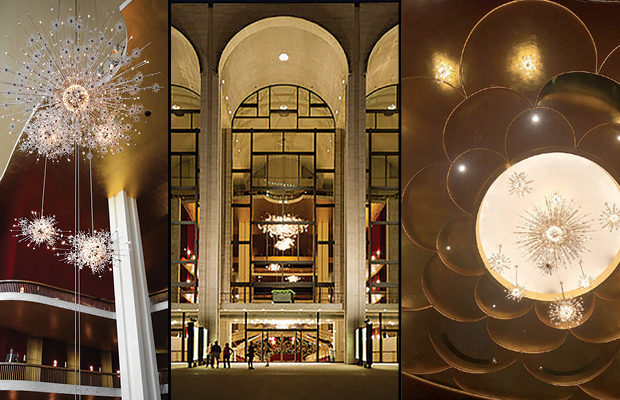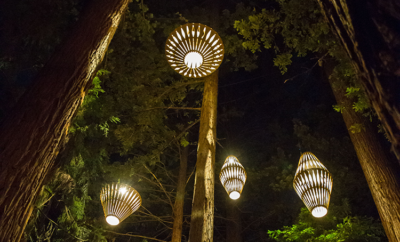
Design
Parting Shot
ON ALMOST ANY GIVEN NIGHT SINCE 1986, a chandelier has come crashing down onto the stage in a theater somewhere in the world. It’s a pivotal moment in the musical Phantom of the Opera and inevitably gets a big hand. But for twenty years longer than that, seven times a week—except in summer—an entire galaxy of chandeliers in one theater has been consistently applauded, not for coming down but for going up.

KELLY TAUB FOR BFANYC PHOTO
Just before each performance at New York City’s Metropolitan Opera, twelve of the twenty-one chandeliers in the auditorium rise toward the gold-leafed ceiling. Despite their weight, they appear ethereal, almost otherworldly, with slender Swarovski crystal–studded rods that radiate out from spherical centers. Even now, half a century after the opening of the house at Lincoln Center, members of the audience clap when the chandeliers ascend. Those who witness it onscreen at the Met’s Live in HD transmissions around the world do the same. (The woman in front of me at an HD presentation of The Barber of Seville in a Times Square movie theater was so captivated by the sight that she spilled her entire bucket of popcorn.) It’s the visual equivalent of the sound of an orchestra tuning up, a glittering signal that something big is about to happen. Everything about opera is big—the voices, the plots, the temperaments— but at the Met, bigness in every sense extends to the chandeliers.
There are eleven stationary ones in the lobby, visible to passersby, in addition to those in the auditorium, all designed by the late Hans Harald Rath of Vienna’s venerable J. and L. Lobmeyr company—a gift from Austria in gratitude for the aid it received from the United States through the Marshall Plan after World War II. During the building’s construction, architect Wallace K. Harrison sent Rath, as inspiration, a book by astrophysicist Jean-Claude Pecker. Duly nudged, Rath produced a series of space-age chandeliers informally known as the “Sputniks,” for the 1957 satellite to which they bear a vague resemblance. In fact, they look more like a graceful kind of supernova, exploding stars, just out of reach. For all their European elegance, they also bring to mind Roy Lichtenstein’s Pop! painting of the same period, as exuberant as the decade they represent. They are, in a word, operatic.
As with everything that sparkles in opera, there is a gritty side. Silvia Callegari, who is now a graduate student, had a summer job after high school cleaning the chandeliers and sconces. “I had a feminist moment,” she says, “hanging on a harness from the scaffolding. I got extra pay for that, even though I was only about ten feet up.” The bulk of the work on these lofty fixtures, though, was remarkably lowtech, involving Windex, rags, a hose, and an inflatable wading pool.
Should you want a little bit of the Met at home, you’re in luck: Lobmeyr makes smaller versions of the chandeliers. The best-selling items in the company’s large repertoire? They’re from the “Metropolitan Series.”












